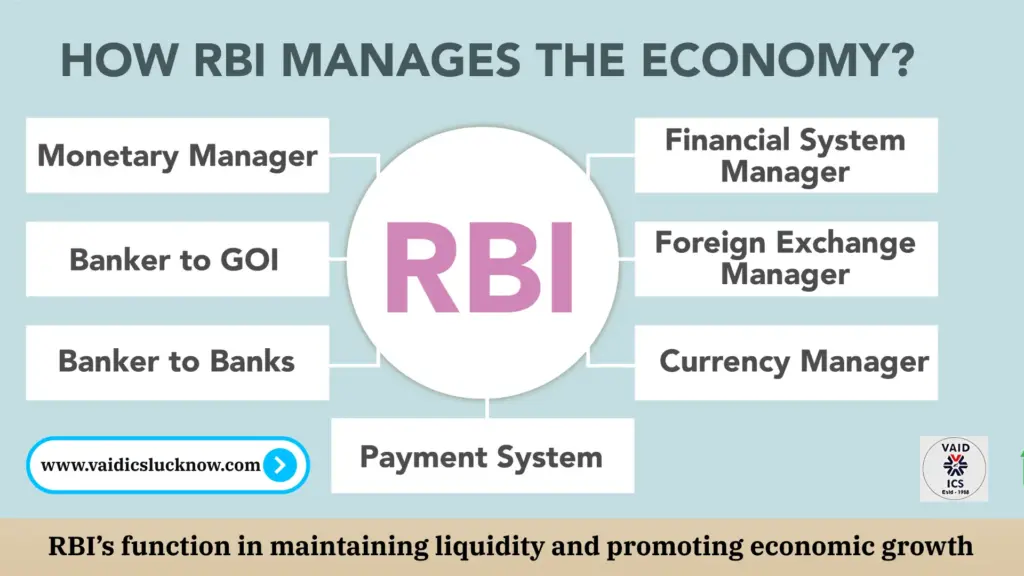August 26, 2025
RBI’s function in maintaining liquidity and promoting economic growth
Why in the News?
- Malhotra noted that RBI Governor Shakti anta Das spoke at the annual banking conclave organized by FICCI and IBA.
- He highlighted RBI’s role in ensuring liquidity and supporting economic growth at a time when:
- Loan growth has fallen to its lowest level since March 2022.
- Private sector investment remains sluggish.
- Global trade tensions (like U.S. tariff hikes on Indian imports) are adding pressure.
RBI’s Role in Economic Growth (Present Context)
Ensuring Liquidity in Banking System
- RBI has maintained ample liquidity to ensure industries (MSME, textiles, footwear, etc.) get credit.
- Loans to industries grew 5.49% (weakest since 2022), showing a slowdown.
Supporting Affected Sectors
- RBI is focusing on sectors that are severely impacted by global conditions and weak demand.
Policy Reforms for Growth
- Reduced repo rate by 200 basis points (bps) to encourage cheaper borrowing.
- Ensuring credit flow to exporters and labor-intensive industries.
Encouraging Investment Cycle
- Called on private companies and corporates to invest confidently and help revive the economy’s momentum.
Tariff Issue (US Tariffs on Indian Goods):
- Background:
- US President Trump announced up to 50% tariffs on imports from India (especially steel, aluminum, and defence-related items).
- Key worry: this may reduce India’s exports and slow GDP growth by about 0.6 percentage points.
- Impact on India:
- RBI expects ‘minimal impact’ if negotiations succeed.
- Export sectors like textiles, footwear, labor-intensive goods could be worst affected.
Steps Taken by RBI to Counter Tariff & Growth Challenges
- Monetary Easing: Repo rate cut by 200 bps.
- Liquidity Support: Ensured banks have enough liquidity to lend.
- Targeted Sectoral Support: Focus on MSME, exporters, labor-intensive industries.
Confidence Building: Urging the private sector to revive investment despite global headwinds.
GIST OF DAILY ARTICLES THE HINDU/INDIAN EXPRESS : 4 sep 2025
September 4, 2025
Gist of Daily News Papers Articles/The Hindu /Indian Express-1 Sep 2025
September 1, 2025
GIST OF DAILY ARTICLES THE HINDU/INDIAN EXPRESS/27 August 2025
August 27, 2025

